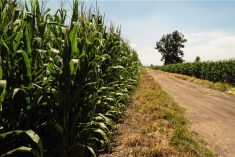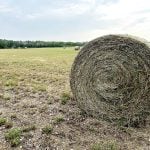Chicago | Reuters — Scorching temperatures in the southern U.S. Plains are stressing cattle as well as crops such as cotton, corn and soybeans, meteorologists and traders said on Tuesday.
Temperatures were forecast to reach 111 F (44 C) in parts of the Texas Panhandle, a core area for cotton and cattle production.
While much of the U.S. spring crop growing areas have seen rain, the southern edges of the Midwest are struggling with heat and drought, potentially cutting into U.S. production potential at a time low global crop supplies have contributed to high food prices.
Read Also

U.S. livestock: Feeder cattle hit contract highs on tight supply
Chicago | Reuters – All Chicago Mercantile Exchange feeder cattle futures and most live cattle futures hit contract highs on…
“If you look at the crop conditions, the biggest problem is in Texas,” said Jack Scoville, vice president at Price Futures Group in Chicago. “A lot of the cotton has already seen some permanent damage this year,” Scoville said.
More than three-quarters of Texas is under severe drought or worse as of July 12, the largest area under that classification for the country’s top cotton state in nine years, according to U.S. Drought Monitor data.
The U.S. Department of Agriculture rated 38 per cent of the U.S. cotton crop in good to excellent condition late on Monday, the lowest for this time of year since 2011. In Texas, only 21 per cent of the crop was rated good-to-excellent.
“The Texas crop is not going to see a recovery,” said Keith Brown, principal at Georgia-based cotton broker Keith Brown and Co.
Cattle are being taken off parched grazing pastures in Kansas, Missouri, Oklahoma and Texas and moved to feedlots or slaughterhouses, said Brian Hoops, president of Midwest Market Solutions.
Pockets of dryness have also emerged in the heart of the U.S. Corn Belt, but forecasts called for beneficial rains in much of the region next week, said Joel Widenor, a meteorologist with the Commodity Weather Group.
Still, areas on the fringes of the crop belt are stressed. In southwest Missouri, some farmers are cutting their corn for silage instead of waiting to harvest in the fall, Hoops said.
“It’s a bad situation for producers in this area. I have a hard time believing that we are going to see the type of a national (corn yield) average that the USDA is forecasting,” Hoops said.
— Reporting for Reuters by Julie Ingwersen; additional reporting by Arpan Varghese, Kavya Guduru and Karl Plume.
















